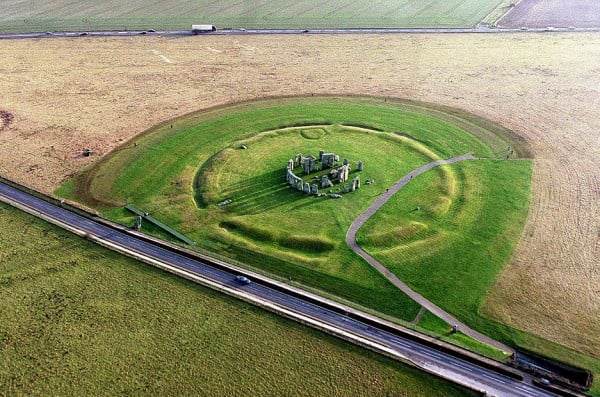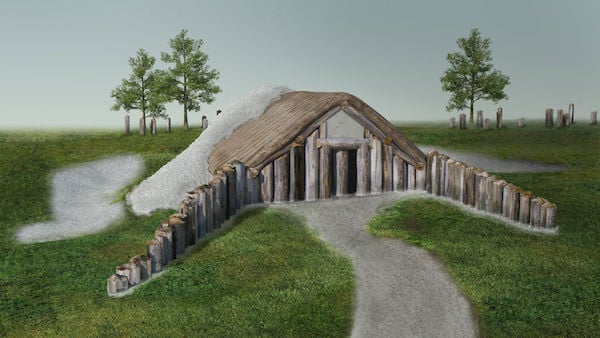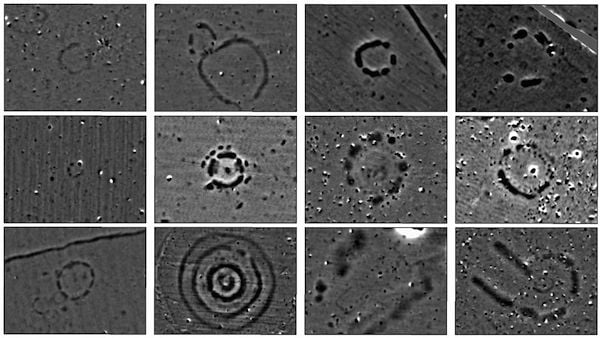Art World
More Astonishing Stonehenge Revelations Emerge
New discoveries surrounding legendary structure have been unmasked.

New discoveries surrounding legendary structure have been unmasked.

Lorena Muñoz-Alonso


Render of the long barrow mortuary building
Photo via: Channel 4
Yesterday, hot on the heels of the recent confirmation that the original Stonehenge was once a full circle (“Summer Heat Helps Unlock the Mysteries of Stonehenge”), archaeologists announced a set of phenomenal breakthroughs in our understanding of one of the world’s most famous sites, the AFP reports.
The most spectacular revelation of the Stonehenge Hidden Landscapes Project is the discovery of a massive religious monument made of 60 stones and located two miles northeast from the famous site. It has long been thought that Stonehenge stands alone.
Geophysical evidence detected using underground scanning suggests that the stones of this newly discovered monument are at least three meters long by 1.5 meters wide and positioned horizontally, not vertically, within its earthen matrix. Some of the stones remain under the ground.

A geological survey showing some of the new structures discovered around Stonehenge
Photo courtesy of the Daily Telegraph
The monument is believed to have surrounded Durrington Walls, a neolithic settlement thought to have housed some 4,000 people. It is thought to be Britain’s largest prehistoric henge, roughly 12 times the size of Stonehenge itself.
The four-year-long digital mapping project has further revealed a staggering 17 structures arranged across a five-square-mile area, with the Stonehenge monument at its heart.
“Most of the area around Stonehenge is terra incognita,” conceded Professor Vincent Gaffney, co-director of the Anglo-Austrian investigation, when speaking at the British Science Festival in Birmingham earlier this week. “It has never been explored, and everything we think about Stonehenge is on the basis of what we don’t know about it.”

Magnetic data images of newly discovered monuments around Stonehenge
Photo via: Channel 4
Dozens of burial mounds were scanned in detail by the team, including a long barrow dating to before 2,500 BC. Within this 33-meter-long barrow the archaeologists found a large wooden structure. Evidence suggests it was the setting of complex rituals involving the dead, including the removal of flesh and limbs.
Although the area was a key religious site in its time, a group of domestic or livestock enclosures have also been discovered, suggesting that housing settlements developed along processional ways or pilgrimage routes in Stonehenge’s sacred landscape.
“Stonehenge is the most iconic archaeological monument, possibly along with the pyramids, on the planet,” added Gaffney at the Science Festival, where the new discoveries were discussed. “This is going to change how we view Stonehenge. It is not yet another find from Stonehenge, it’s a fundamental step forward in the way we understand it.”

A reconstruction of the timber “Hall of the Dead” recently found near Stonehenge
Photo courtesy of the Daily Telegraph